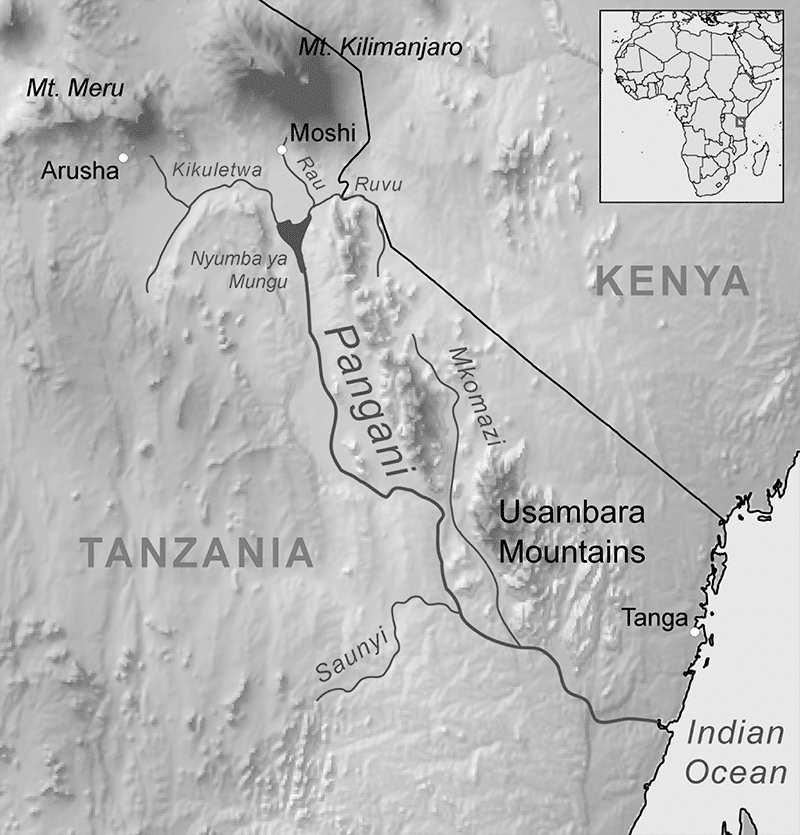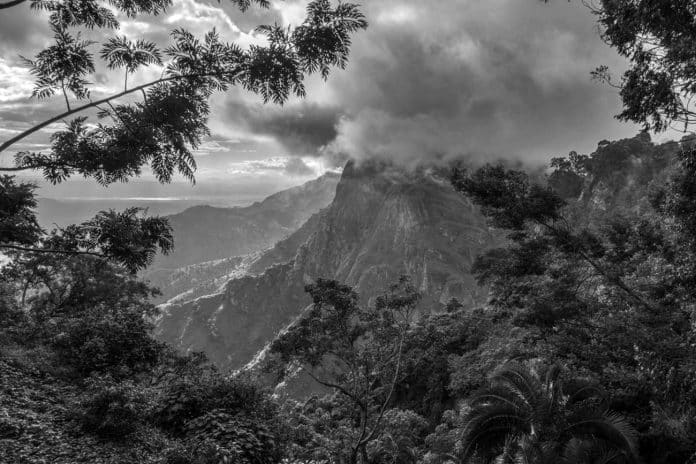Tanzania Usambara Mountains – Geology, Ecology, History, Tourism and More
The Usambara Mountains are the eastern side mountains of the Eastern Arc Mountains, located in north-east Tanzania in tropical Eastern Africa. The Lushoto Region of the Tanga area contains ranges that are around 90 kilometres [56 miles] long and half that width. They are made up of Precambrian metamorphic stones and were produced roughly 2 million years ago by uplifting and faulting. They’re divided into two sub-ranges, with the Western Usambaras being higher-up than the Eastern Usambaras, which are closer to the coast and get more rain.
The Usambara Mountains are covered with a virgin tropical rainforest that has been isolated for such a long time and has become an endemism centre. Historically, Shambaa, Bantu, and Maasai people lived there, but Mbegha formed a Shambaa empire in the eighteenth century. After a succession battle in 1862, the kingdom gradually fell apart. After World War I, German colonists moved to the area that would become German Eastern Africa, and it became part of the UK-mandated province of Tanganyika.
Geography of the Usambara Mountains Tanzania
The Usambara Mountains stretch for around 90 kilometres [56 miles] and are 30–50 kilometres [19–31 miles] wide. The East Arc Mountains, which run from Kenya to Tanzania, are home to these mountains. The range is a biodiversity hotspot on the planet. Chambolo peak, at 2,289 meters high above sea level, is the highest point.
Amani in the east and Lushoto in the west are the closest towns to the mountain (that is why sometimes you may here the mountains also called as Lushoto Usambara mountains). The East Usambara Mountains and the West Usambara Mountains are the two sub-ranges of the Usambaras. The East Usambara is tinier than the Western Usambara and is closer to the shore. It also receives more rainfall.
Usambara Mountains Geology
Nearly 2 million years ago, the mountain was formed. The rainforest has had a long and unique evolution due to the absence of glaciations and a generally stable climate, resulting in an astounding amount of endemism and old-growth cloud rain forests.
The East and West Usambara Mountains are extensive ranges of pyroxenes, acid-gneisses, and amphibole-bearing Precambrian metamorphic rock formations. These mountain ranges were formed by faulting and uplifting, which resulted in a drainage system of troughs that formed multiple watersheds, which provided water to the bulk of the population in northeastern Tanzania.
Usambara Mountain Range Ecology
The Usambara Mountains range are rare in East Africa in that their natural sections are still covered with tropical forests, which are otherwise found exclusively in Western Africa. It is a Biodiversity hotspot and is deemed extremely important ecologically. Throughout the range, the Tanzanian government, research teams and allied NGO’s, as well as donor nations such as Norway, are expanding and contributing to the many protected zones.
The Usambara eagle-owl [Bubo vosseleri], Usambara weaver [Ploceus nicolli], Usambara akalat [Sheppardia montana], the species of tree Calodendrum eickii and African violet [Saintpaulia ionantha], are all native to the Usambara woodlands.
![The Usambara eagle-owl [Bubo vosseleri]](https://unitedrepublicoftanzania.com/wp-content/uploads/2022/02/The-Usambara-eagle-owl-Bubo-vosseleri.jpg)
Human History
Historically, Shambaa, the Bantu, and Maasai peoples, who were a mixture of pastoralists and agriculturalists, lived in the Usambara Mountains area.
Mbegha established a Shambaa empire based on Vugu in the first part of the eighteenth century. Kinyashi Muanga Ike, Mbegha’s grandson, strengthened the kingdom’s political and military structures. Kinyashi’s son, Kimweri ye Nyumbai, expanded the empire to include the east and west Usambara Mountains, as well as the seashore and the Pangani River basin in the south. Following Kimweri’s death in 1862, the kingdom was torn apart by a succession dispute.
German colonialists arrived in the late 1900s in the Usambara District of German Eastern Africa, bringing with them a combination of cash crops such as coffee, tea, lumber trees, and quinine and placing forest under reservation for either timber use or water conservation. They also introduced many new Western ideals – for example, coexistence with the forest vs forest as a “distinct wilderness,” which were

frequently fundamentally opposed to traditional norms. Colonialism resulted in a huge shift in the community’s perception of forests and the transition of traditional agriculture to cash crops, including quinine, maize, bananas, pine trees, tea, and coffee.
The Governor of the Usambara Region of German East Africa, Adalbert Emil Walter Redliffe le Tanneux von St. Paul-Ilaire [a.k.a. Baron Walter], collected seeds and plants of a tiny herb in 1882 and sent them to Hermann Wendland, Head of the Berlin Royal Botanic Garden. Wendland nurtured the plants and identified them as a new species in a new family, Saintpaulia ionantha, which is known as African violet in English. He acknowledged von St. Paul-Ilaire in the generic name Saintpaulia; the special name he provided means violet [Gr. ion] flower [Gr. anthos]. The plants are endangered in their native cloud forests of the Usambara Mountains.
A British mandate over Tanganyika followed after World War I. The British government maintained its policy of preserving and exploiting forests.
Development and Tourism
Today, the Usambara Mountains district inhabitants have one of the greatest growth rates, around 4% [compared to the Tanzanian’s national average of 2.1percent], the highest poverty levels, and the largest population densities in the country. The majority of the residents are agricultural workers who rely mainly on the surrounding forests for timber, agricultural clearing, medicinal plants, and fuelwood.
The East and West Usambara Mountains have lost 70 per cent of their natural forest cover. Foreign-controlled logging firms that carried out massive deforestation as from the 1950s onwards wreaked havoc on the country’s ecosystems. Tanga’s sawmill processed Eastern Usambara timber, and its productivity was doubled with Finnish development finance in the 1970s. Forest and land degradation are still significant concerns.
There are still a variety of destinations that draw travelers looking for unique experiences outside of developed tourist destinations. Lushoto [German colonial-era Wilhelmsthal], the once-famous German resort Amani Nature farm and Reserve, and the University of Mazumbai Forest, which is regarded as the only remaining example of virgin tropical forest in the Eastern Usambara Mountains.
Usambara mountains hiking is one of the popular things to do for most tourists who visit the region.
Usambara Mountains Accommodation
Mullers mountain lodge Usambara is one of the recommended places to stay if you want to enjoy what these mountains offer to the fullest.
Usambara Mountains Map

For more articles related to Mountains of Tanzania, click here!

































